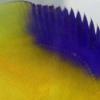Similar looking fish species. A coincidence? Maybe not..
-
Topics
-
Latest Update
-
0
CRYPTOCURRENCY SCAM RECOVERY SERVICES | ULTIMATE HACKER JERRY
Ultimate Hacker Jerry performed an excellent operation to free my funds that had been deceitfully obtained through scams from dishonest crooks. Their prompt action and unflinching support of my case have given those priceless funds which had looked gone forever a second chance…I sincerely appreciate all of the members of the Ultimate Hacker Jerry team for their professionalism, hard work, and perseverance during this process. Their website; www. ultimatehackarjerry. co m E-Mail; contact@ ultimatehackarjerry .c om Text /Call / Whasp ; + 1 (458) 308 (08 25 -
-
8
Radiion xr30 pro light questions
The ac adaptor I was quoted for 300+ sia -
1
-
2
WTS - XC Illutionist n sps
Bowerbankii many heads approx 3” - $55 Collection amk ave 4
-






Recommended Posts
Join the conversation
You can post now and register later. If you have an account, sign in now to post with your account.